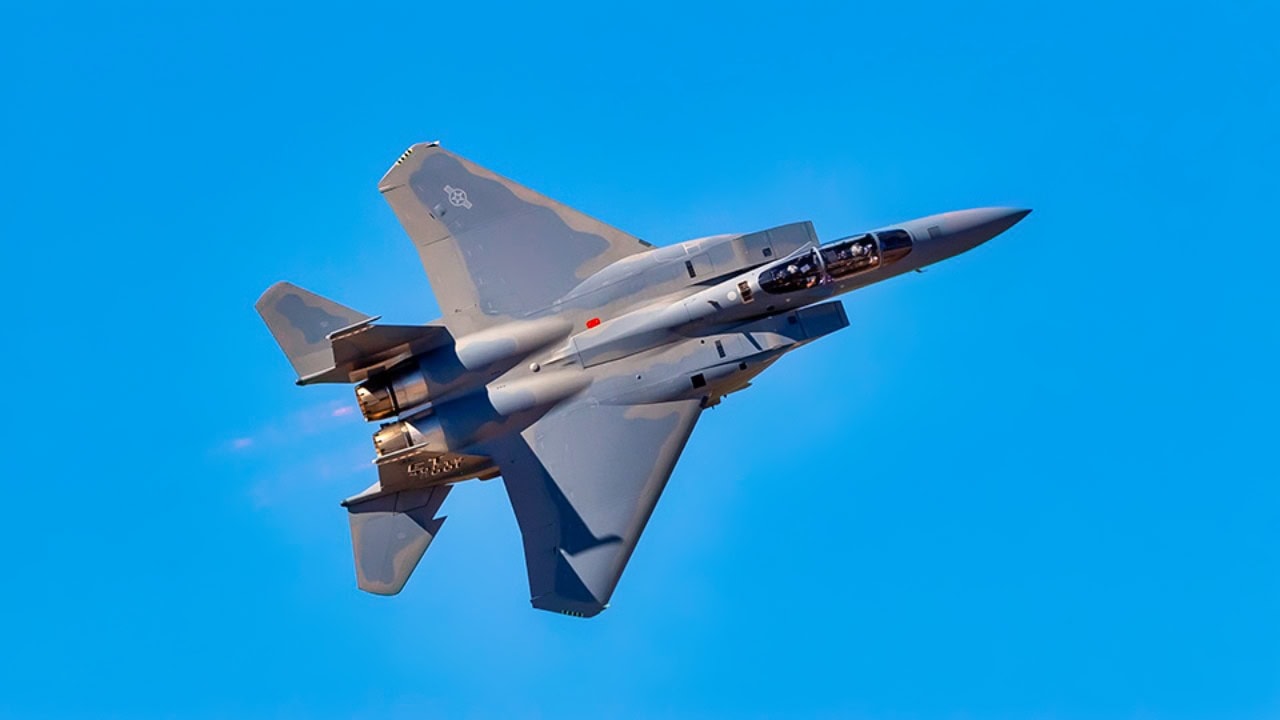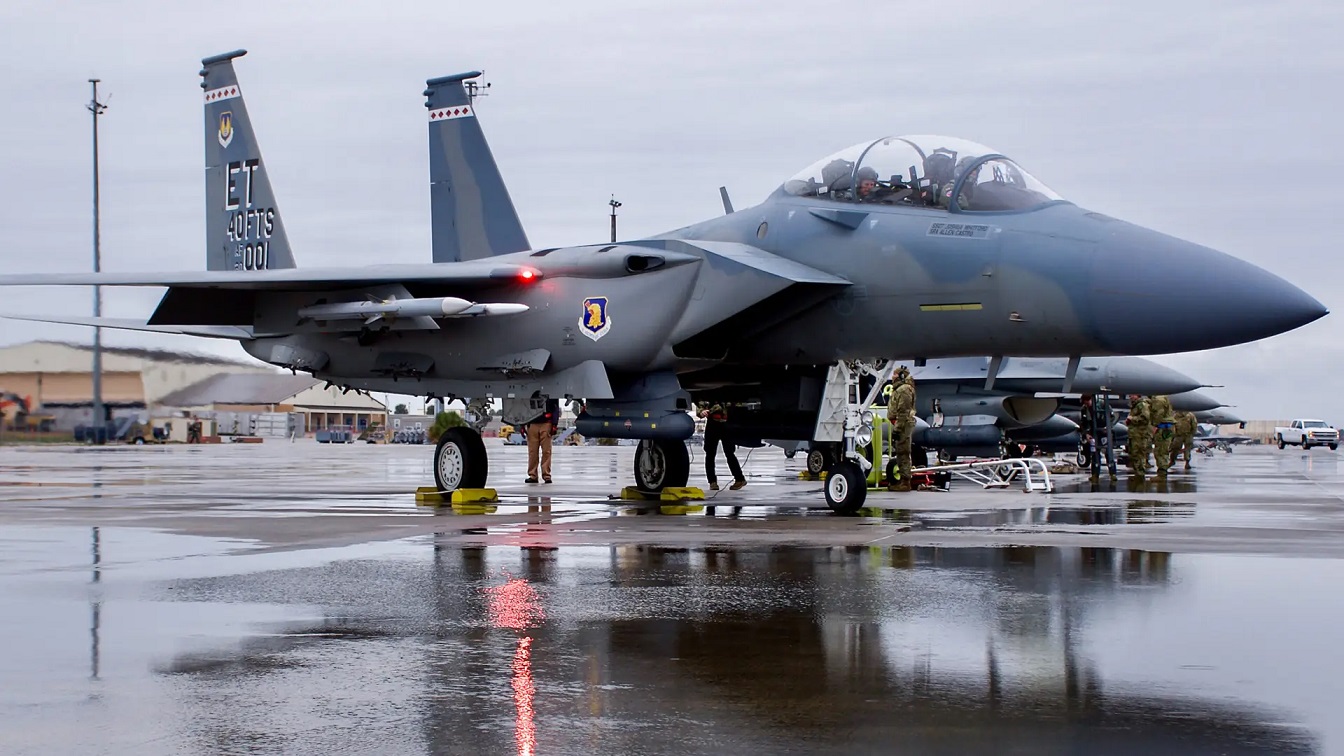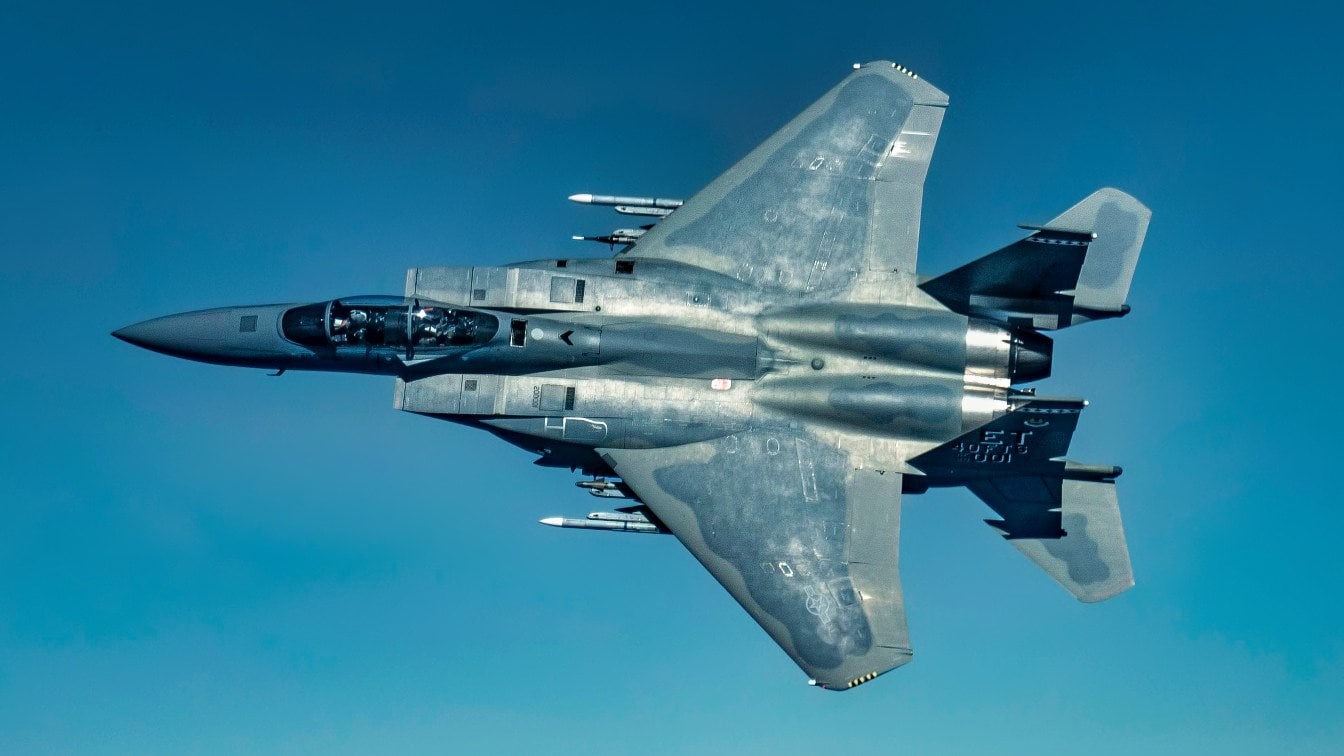Article Summary: The F-15EX Eagle II is proving that a fourth-generation fighter can still play a crucial role in modern warfare. Despite lacking stealth, the Eagle II boasts superior air-to-air combat capabilities, long-range missile integration, and potential electronic warfare upgrades.
Key Point #1 – However, challenges remain, including China’s growing arsenal of long-range missiles, such as the PL-17 and HQ-9. The U.S. Air Force is exploring innovative ways to keep the F-15EX relevant, from electronic attack capabilities to long-range anti-ship missile integration.
Key Point #2 – As tensions rise in the Indo-Pacific, could the F-15EX be a game-changer, or is it fighting against obsolescence?
4 Words: Not Stealth, But Special.
The F-15EX Eagle II Fighter, The Plan To Keep It Relevant For Modern War
The F-15EX is a two-seat, twin-engine, multi-role fighter aircraft. It is a derivative of the Air Force F-15E Strike Eagle. The F-15EX inherits modern advances such as “fly-by-wire” flight controls, dual Digital Helmet Mounted Cueing Systems, a large touchscreen display, and additional improvements, such as the AN/ALQ-250(V)1 Eagle Passive Active Warning Survivability System for electronic warfare.
The F-15 has been a fantastic aircraft for decades. Although non-stealthy, the F-15EX retains the dogfighting skills to mix it up with fifth-generation fighters. But there are questions about whether it could survive against long-range missiles.
F-15EX Retains Air Superiority Role
However, the Office of the Director, Operational Test & Evaluation (DOT&E) gave very high grades to the F-15EX Eagle II in its annual report.
The report noted: “The F-15EX is operationally effective in all its air superiority roles, including defensive and offensive counter-air against surrogate fifth-generation adversary aircraft, as well as basic air-to-ground capability against the tested threats.
“The F-15EX was able to detect and track all threats at advantageous ranges, use onboard and off-board systems to identify them, and deliver weapons while surviving.”
Interestingly, the Air Force retains the air superiority role over all others, but the multi-role aircraft is also viable. The fact that it can defeat fifth-generation aircraft speaks volumes about how advanced the F-15 was when it first flew in 1972, some 50+ years later.
Despite not being stealthy, the F-15EX is valuable for air superiority missions. Its maneuverability and firepower to engage enemy aircraft, particularly in situations where stealth is not as critical.
Missile Threat Highlighted
The report did say that many future threats were not addressed. “The mission-level testing did not include some advanced, longer-range threat weapons becoming operational at the time of F-15EX fielding.”
That points to the upgraded Chinese HQ-9 air defenses, which can now hit ranges of 239km. The Chinese are also working on the big PL-17, a long-range air-to-air missile thought to be designed to go after tankers or early warning and control (AEW&C) aircraft. The PL-17 has an estimated range between 250-310 miles. The PL-16 long-range anti-air missile has a range of 190 miles.
My friend Alex Hollings has always been my first go-to source of military aircraft, and he has a couple of intriguing scenarios where the F-15EX could thrive in a modern battlespace against potential Chinese air defenses.
Hollings believes that the F-15EX could replace the E/A-18 Growler aircraft since the Navy is ceasing production on the Growler in 2027.
“The U.S. Navy’s EA-18G Growler has nine total hardpoints for weapons, fuel tanks, and jamming equipment with the ability to fly with as much as 17,750 pounds of weapons and gear slung beneath it,” Hollings wrote.
“The Eagle II has 12 hardpoints that it could potentially be used for these sorts of systems (though it can be expanded to a whopping 23 for other weapons) and is capable of taking to sky with a mind-boggling 29,500 pound of ordnance and gear onboard,” he added.
Boeing said in June of last year that they were considering integrating the Growler’s new Next Generation Jammer Pods into the Eagle II to convert the fighter into an electronic attack platform capable of not just penetrating contested airspace but increasing the survivability of other 4th and 5th generation aircraft along the way.
The F-15EX Eagle II Can Also “Reach Out And Touch Someone”
China isn’t the only one with plans for long-range missiles to fire from aircraft. The US stealthy AGM-158C Long-Range Anti-Ship Missiles (LRASMs) are an intriguing choice for a long-range weapon. F-15Es and EXs armed with LRASMs would significantly boost the Air Force’s ability to engage enemy warships, which could be particularly valuable in any potential future combat in the Indo-Pacific against China.
The AGM-158C-1 is a variant of the LRASM and has a range of 250-300 miles. Lockheed Martin is also working on a C-3 variant that will double the range to 600 miles. These will be fitted on F-15EX Eagle II fighters.

F-15EX Eagle II Fighter from Boeing.
In April of last year, the US Navy, in partnership with Lockheed Martin, successfully conducted a historic Long-Range Anti-Ship Missile (LRASM) flight test with four missiles simultaneously in flight.
During the 12th Integrated Test Event (ITE-12), the US Navy conducted a test where four LRASMs flew simultaneously. This was the first test and demonstrated how the services viewed how the missiles would be used in combat.
The F-15EX Eagle IIs already have an extended combat range due to having conformal fuel tanks under each wing. The Eagle IIs will still have some bite in them in the event of war with China.

F-15EX. Image Credit: U.S. Air Force.
About the Author:
Steve Balestrieri is a 19FortyFive National Security Columnist. He served as a US Army Special Forces NCO and Warrant Officer. In addition to writing for 19FortyFive, he covers the NFL for PatsFans.com and is a member of the Pro Football Writers of America (PFWA). His work was regularly featured in many military publications.

